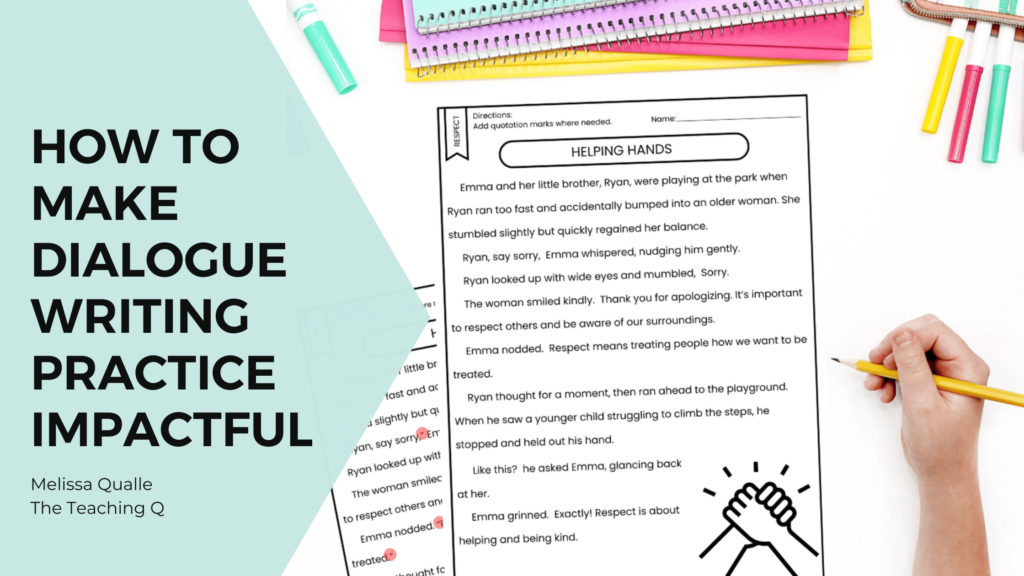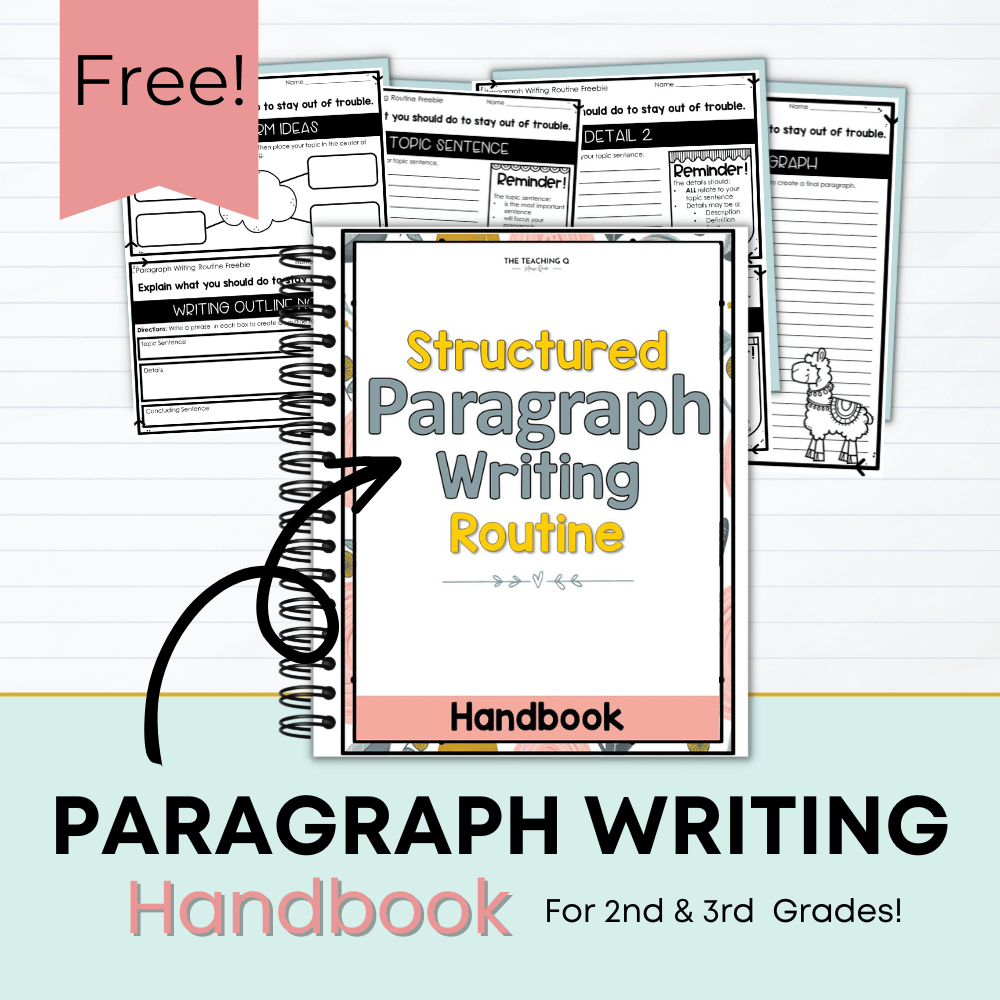Teaching students how to use quotation marks and dialogue writing practice can feel like a challenge, but it doesn’t have to be!
Many students struggle with where to place quotation marks and how to properly format dialogue in their writing. At the same time, teachers often look for ways to integrate character education into daily lessons. What if you could do both at once?
With the right approach, you can combine dialogue punctuation practice with meaningful discussions about character traits, making your writing lessons more engaging and impactful.
Why Teach Dialogue Writing in Elementary Grades?
Dialogue is a key element of storytelling, helping students develop their characters, bring their writing to life, and make their narratives more engaging. However, writing dialogue correctly requires students to understand:
- How to use quotation marks properly
- Where to place commas, periods, and other punctuation
- How to structure a conversation in a story
- The difference between spoken words and narration
Without consistent practice, students may struggle with these conventions, making their writing harder to read. But here’s the good news—practicing dialogue doesn’t have to be boring or disconnected from real-world lessons!
By tying dialogue writing practice to character education, students get to work on an important writing skill while also reflecting on meaningful life lessons.
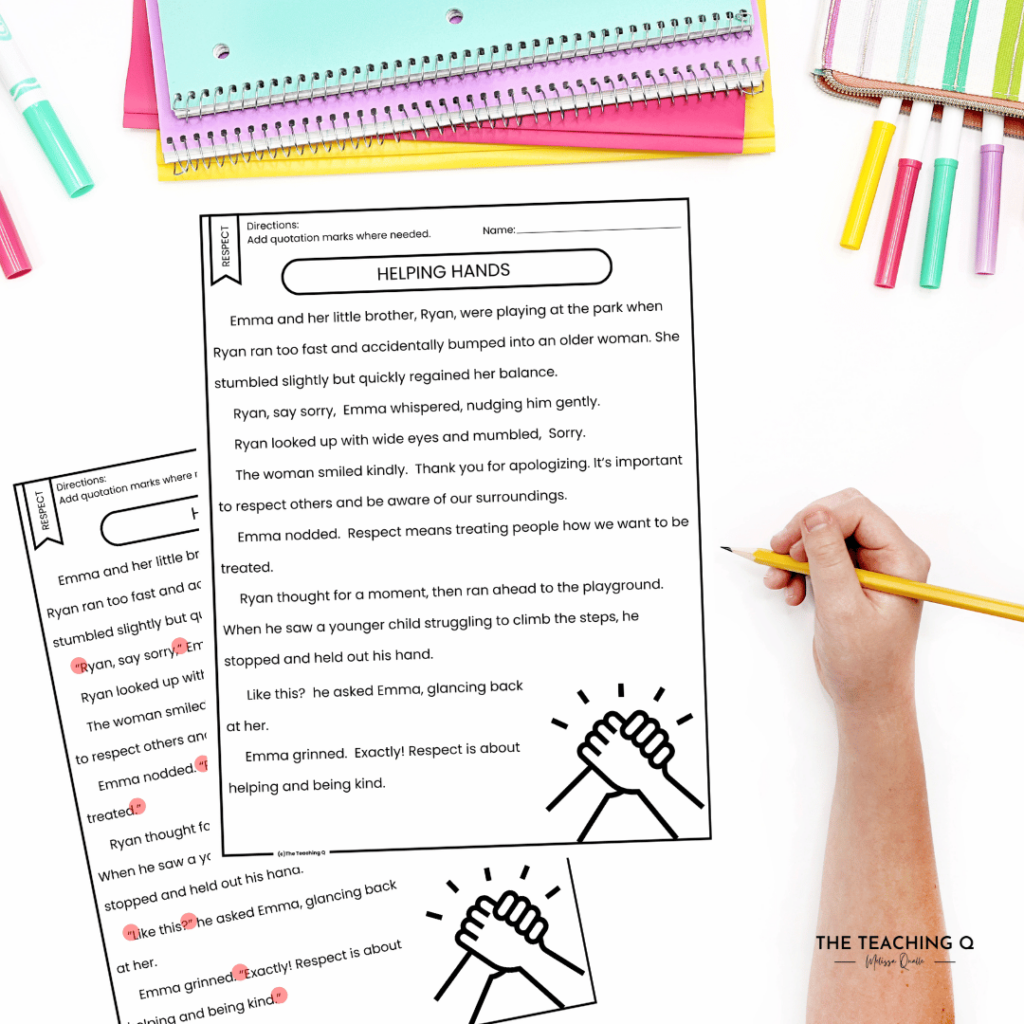
A Smarter Way to Practice Quotation Marks
Instead of giving students random sentences to correct, why not give them engaging short stories that teach real-life lessons? That’s why I created Dialogue Worksheet Practice Using Quotation Marks.
Each practice text is centered around a Character Trait narrative with a strong message. Here are the character traits addressed:
- Respect
- Responsibility
- Honesty
- Perseverance
- Courage
- Integrity
- Compassion
- Kindness
- Citizenship
- Cooperation
- Self-Control
- Confidence
- Trustworthiness
- Curiosity
- Discipline
- Gratitude
- Optimism
- Resilience
- Fairness
- Nobility
- Loyalty
Each short story includes plenty of dialogue, allowing students to:
- Identify missing quotation marks and punctuation
- Understand how dialogue helps tell a story
- Apply what they learn by writing their own dialogue
Not only do students learn the mechanics of writing dialogue, but they also engage in meaningful discussions about character and decision-making—skills that benefit them far beyond the classroom.
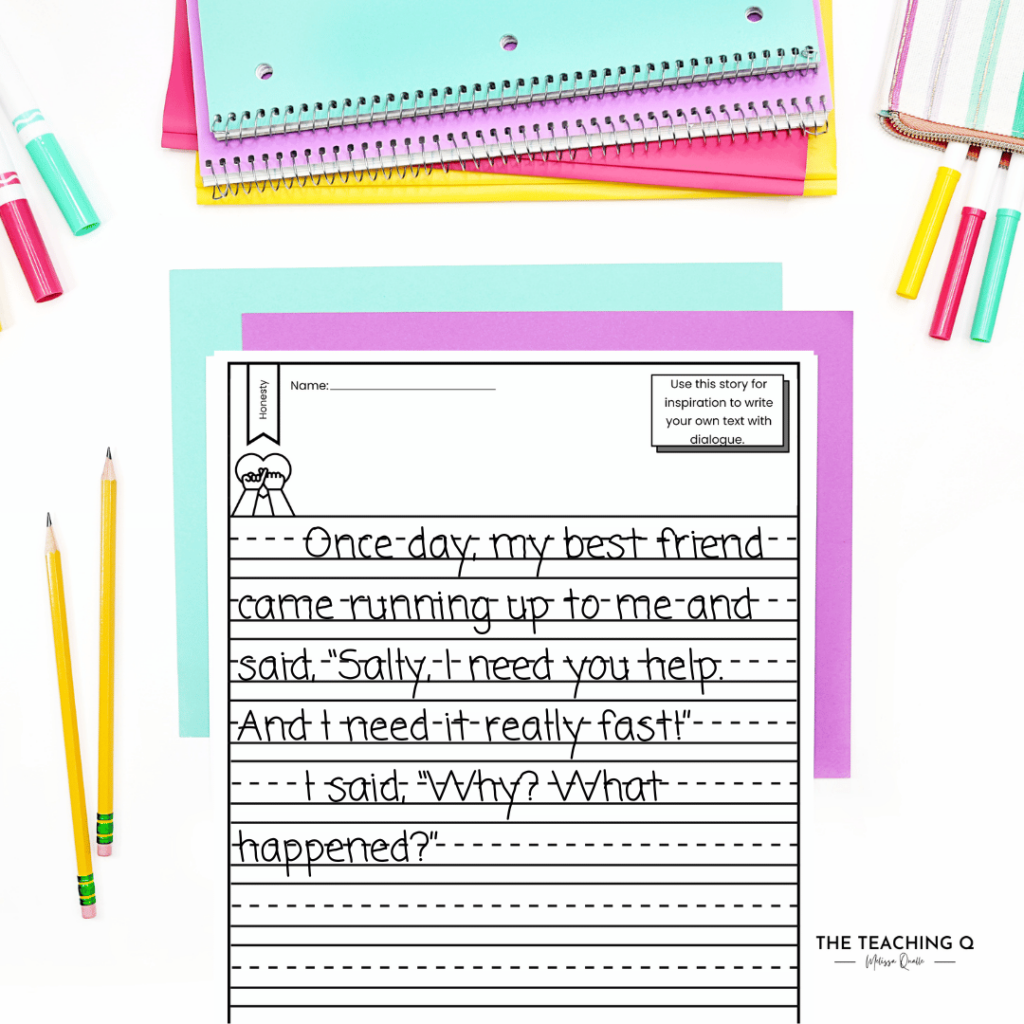
Why Combine Dialogue Writing with Character Education?
We know that time is limited in the classroom. Teachers are always looking for ways to integrate multiple skills into one lesson. This resource allows you to double up on learning by combining:
📝 ELA Writing Practice – Students master punctuation and formatting for dialogue.
💡 Social-Emotional Learning (SEL) – Students reflect on character traits through meaningful stories.
🗣 Classroom Discussions – Encourage critical thinking about real-life situations.
By discussing character traits while practicing dialogue, students see the real-world purpose of both skills. They aren’t just learning grammar rules—they’re engaging with stories that make them think!
Flexible Ways to Use This Resource
One of the best things about this resource is its flexibility. Whether you’re looking for a full lesson or just an easy-to-implement activity, these worksheets fit into any schedule.
📚 Whole-Class ELA or SEL Lessons – Teach dialogue punctuation while discussing character traits as a group.
🔍 Literacy Centers – A meaningful, independent activity for extra practice.
✅ Early Finishers Work – Keep students engaged with purposeful skill-building.
🏠 Homework – Involve parents by reinforcing both writing and social-emotional learning.
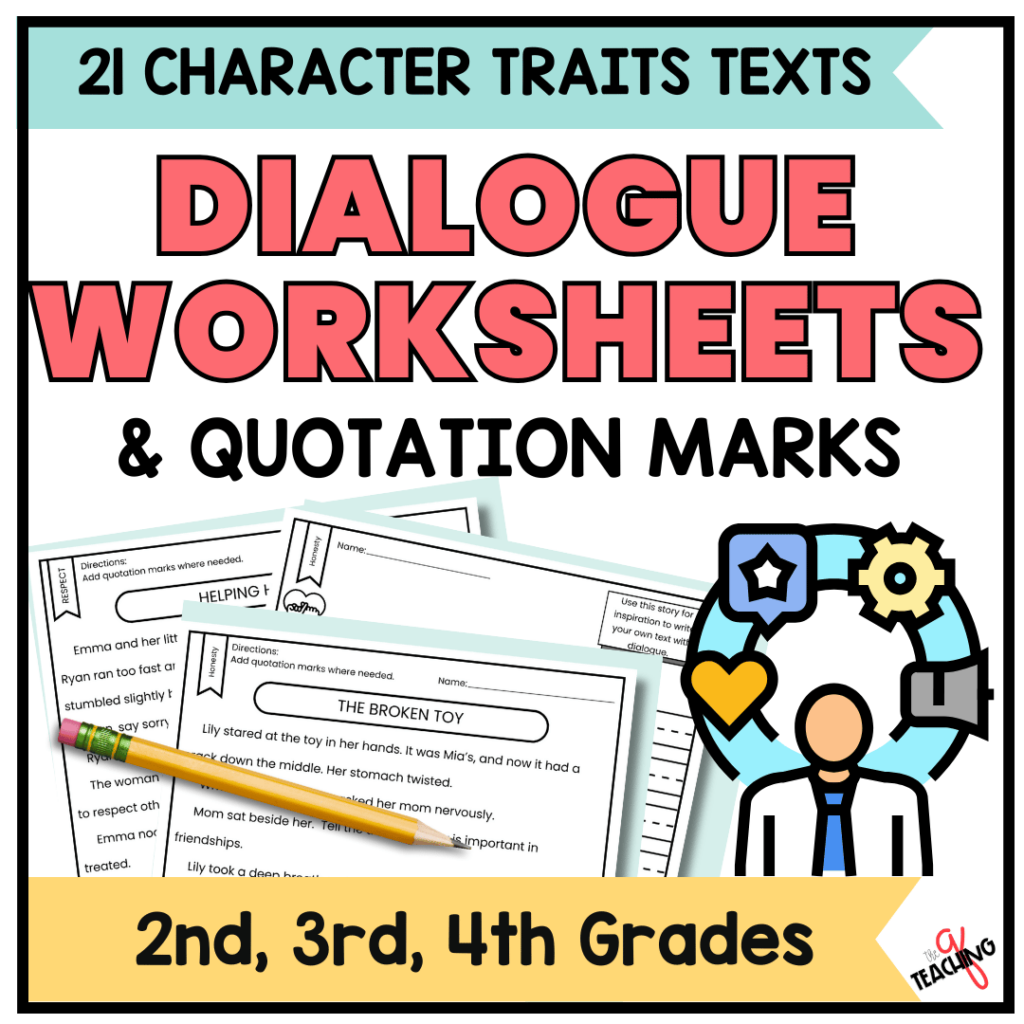
Make Dialogue Writing Engaging and Meaningful
When students see a real purpose behind their writing practice, they become more engaged and invested in their learning. By combining dialogue writing practice with character education, you’re not only improving their writing skills—you’re also helping them grow into thoughtful, compassionate individuals.
If you’re looking for a resource that makes dialogue writing more engaging and impactful, this is the perfect fit.
👉 Check out the Dialogue Worksheet Practice Using Quotation Marks for 2nd, 3rd, 4th Grades on TPT and help your students master dialogue punctuation while building strong character!
Melissa | The Teaching Q


